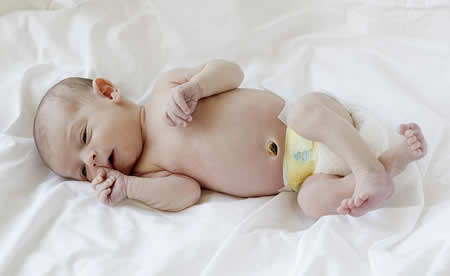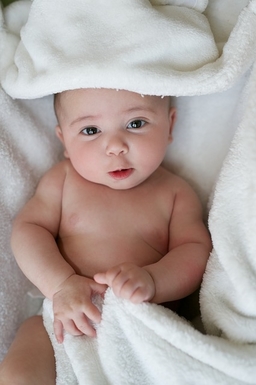Is your child hitting developmental milestones on time? Let’s go over what your child should be demonstrating at various months before turning 1 year old.
Keep in mind that you should be considering your baby’s corrected age when making comparisons, if he or she was born a preemie. Children develop at different speeds and your child may be 1-2 months ahead or behind “schedule”.
If significantly behind, address your observations with your baby’s pediatrician. Your child may require physical therapy if there is concern for an untypical delay.
At Rebound, we will use objective tests to determine how behind your child is and create a treatment plan to help your child reach important milestones.

1 – 2 Months
Your baby can start to turn his or her head when lying on the back and belly. He or she will be able to briefly lift his or her head up during tummy time.
You will notice random arm and leg movements. Your little one can see objects 8-10 inches in the distance and will be most interested to look at your face and highly contrasted auditory toys, such as a black and white rattle.
3 Months
Baby should be tolerating tummy time for at least 60 minutes a day.
While on the tummy with forward forearm prop, he or she will be able to keep his or her head more upright and visually track objects to each side with head rotation.
He or she will be able to move arms and legs more symmetrically; i.e. bring both hands to mouth or body and straighten both legs.
4 – 5 Months
Neck muscles become strong enough to keep the head up against gravity when you pull your baby up to sitting by his or her hands.
Your baby will start to reach his or her hands to knees and feet.
He or she will be able to roll from tummy to back and begin to roll from back to belly, over both sides.
6 – 7 Months
Your baby will start to look steadier sitting independently; he or she may play with a toy while sitting and will put hands forward to prevent loss of balance.
He or she will prefer to be on his or her belly and will roll easily to do so when placed on his or her back.
You may start to notice your baby pivoting around on his or her belly or push up on hands and knees.
8 – 9 Months
Baby is on the move! You might observe your baby scooting on his or her bottom and/or belly to explore.
Crawling, getting into and out of sitting, kneeling, and pulling up to stand will also occur during this time.
10 – 12 Months
Cruising along furniture will happen before independent walking. Parents may have the notion that their child should start walking by 12 months old, and if not, believe there may be something wrong.
But typical babies may walk anywhere between 9 to 18 months old.

